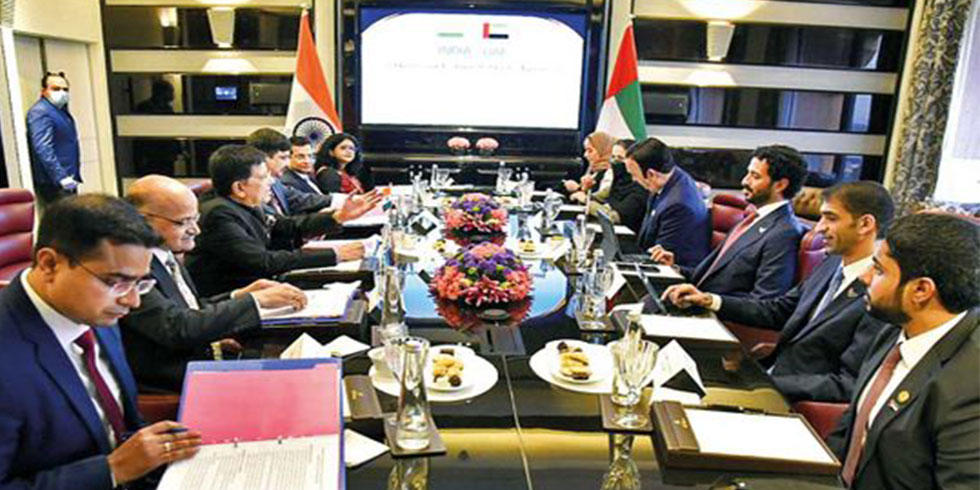The proposed Visakhapatnam-Chennai industrial corridor is expected to give fillip to the economic prospects of Seemandhra. Conceived with an investment of over `1 lakh crore, the prestigious project is expected to create more than 50,000 jobs, both directly and indirectly, in the first phase alone. It is touted as one of the projects that could potentially transform the industrial landscape of Seemandhra in less than a decade of its commissioning.
Being set up on the lines of the model Delhi-Mumbai Industrial Corridor project, this is also one of the key sops offered by the Central government as part of the special package to Seemandhra in the Reorganisation Act and will be developed in two or three phases spanning more than 15 years.
“The idea is to create a strong economic base with globally competitive environment and state-of-the-art infrastructure to activate local commerce, enhance foreign investments and attain sustainable development,” says B Ashok Reddy, president, Global Human Resources and Corporate Affairs, Infotech Enterprises Ltd.
Concedes S V S Rama Raju, president, Operations, Nagarjuna Agrichem, “The proposed industrial corridors promise to open the floodgates for new investment opportunities and will redefine the economic landscape of Seemandhra.”
It may be noted that Visakhapatnam was recently included in the upcoming Chennai-Bangalore Industrial Corridor, which will essentially give thrust to industrial development in three border districts namely Anantapur, Chittoor and Nellore. As per the project development plan, the Krishnapatnam port region development will be taken in the first phase, while areas around Hindupur-Chittoor-Nellore will be developed in the second phase.
“While the Chennai-Bangalore corridor will include only three districts of Seemandhra, the Visakhapatnam-Chennai corridor is expected to cover maximum number of districts and villages along the stretch of the corridor. Essentially, this will ensure that development is not restricted to one or a few locations but whole state,” said Reddy.
Typically an industrial corridor, developed by the government in private partnership, will act as an intermediary to develop infrastructure projects, which in turn attract industries and of course investments.
“The essence of such an industrial corridor is to increase employment potential, exponentially raise exports and augment industrial output, which in turn underscores the growing economic scenario of the region, all in a given period of say 10 years or so,” explained Vanitha Datla, executive director & CFO, Elico Ltd and vice- chairperson, CII-AP chapter.
The corridor passes through a combination of well developed locations such as Visakhapatnam, Vijayawada, moderately developed areas like Kakinada, Rajahmundry and Machilipatnam and under developed industrial areas like Gudur, Nuziveedu and Ongole. These have varying natural resources, human skills but are with or without quality physical and social infrastructure that could propel industrial growth.
“The missing link is the infrastructure ie., logistics, industrial and social, which is incapable of handling the envisaged industrial output and exports,” said Raju.
Investment regions and industrial areas will be proposed along the stretch covering key places such as Rajahmundry, Kakinada, Nuziveedu, Vijayawada, Bhimavaram, Machilipatnam, Guntur, Ongole, Bapatla, Nellore, Gudur and Naidupeta. Besides, self-sustaining industrial townships with world-class infrastructure, road and rail connectivity for freight movement to and from ports and logistics hubs, domestic/international air connectivity, reliable power and quality social infrastructure have to be created to provide a globally competitive environment that is not only conducive for setting up businesses but also superior compared to the existing hubs.
“The industries coming up would have the advantage of improved infrastructure as there would also be logistics hubs to facilitate warehousing and movement of goods. A similar advantage in terms of trained manpower would become available as knowledge hubs are also being planned in such regions on PPP basis,” said Datla.
Premium infrastructure and high-speed connectivity will offer immense opportunities for businesses and sectors that are likely to get a boost including steel, cement, food processing, IT, automobile, readymade garments, petroleum, chemicals and petrochemicals complex.
Significantly, the corridor assists potential investors in organizing, negotiating loans and to some projects even advances. Extension of credit facilitation is the star attraction of the project. With access to capital getting tighter, thanks to the global macro economic situation, prospective investors with mid and large-scale projects will be enthused with such an option.
In specific cases, it will also raise financing instruments like project development fund, viability gap fund and revolving fund that could be used for undertaking project development activities on a PPP model.
The corridor also facilitates, among other things, resources required for companies to commence operations. Over time, districts and villages along the stretch will attract foreign investment and attain sustainable development and emerge as a hub of social and economic development.
Evidently, implementation of the project requires huge investment and public and private sector participation is imperative. Development of infrastructure, power plants, ports, airports, special economic zones, industrial parks, agro-processing hubs, knowledge cities and integrated townships can be developed on a viable PPP model with participation from both the Central and state governments.
All this is expected to boost trade and commerce between south India and East Asia by enabling quicker movement of goods.
“Once implemented, the industrial corridors will result in world-class tolled road, high-speed rail link and centres along the corridor would develop as industrial clusters,” said Reddy of Infotech adding that the manufacturing hubs in and around Anantapur, Nellore and Chittoor that the corridor will create will be critical to the future growth of Seemandhra.
“It is among the key components of the National Manufacturing Policy (NMP) that aims to raise the share of manufacturing in Seemandhra to the country’s GDP,” he added.
Stating that the industrial corridors will pave way for the emergence of industrial cities otherwise known as ‘smart cities,’ Datla said, they will help develop infrastructure linkages such as pioneer power plants, assured water supply, high capacity transportation and logistics facilities for industries. “Notable among the benefits is the fact that these industrial corridors will provide employment to a majority of the local population. Besides reviving the real estate sector, the industrial corridors will also provide a boost to the city’s economy,” she added.














Add Comment